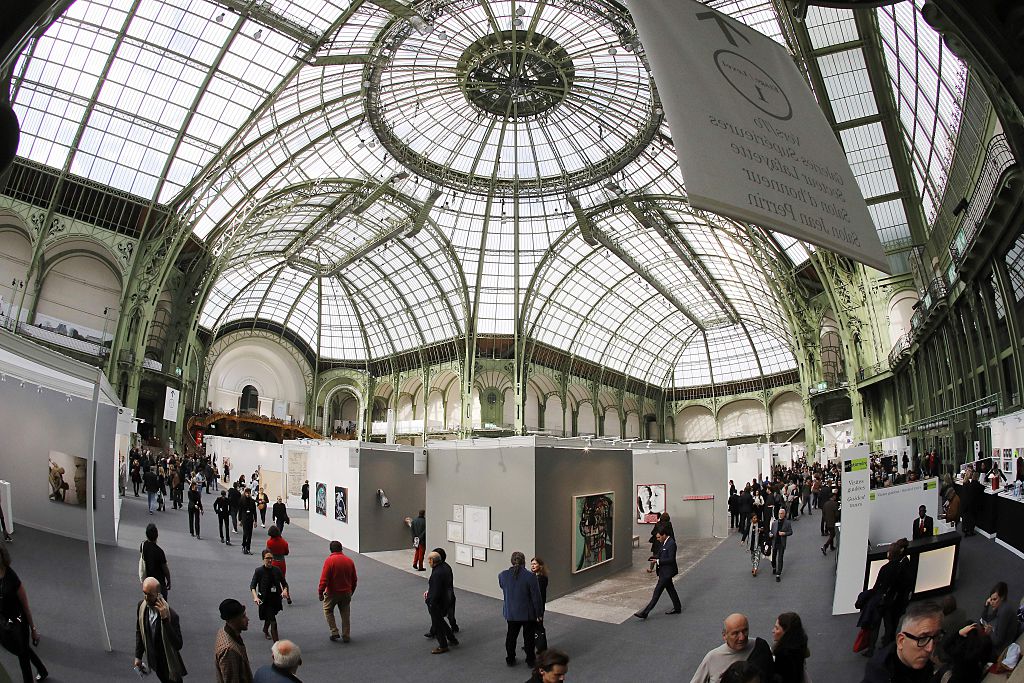
A new report released by a French gallery association has revealed the impact of the pandemic on art galleries around the country in 2020. Despite France’s cross-sector financial support for businesses, and specific measures to bail out the culture sector, 78 percent of galleries saw a decline in income last year.
At the same time, the findings show that the situation is not as bad as previously feared. Last March, the Comité Professionnel des Galeries d’Art issued a stark report warning that one third of French galleries were at risk of closure. The follow-up survey, conducted among the trade association’s 279 gallery members last November, showed a different picture.
“We don’t have many closures linked to Covid for the moment. Those that have closed were mainly those who were already in decline before the crisis, but we must stay vigilant,” Marion Papillon, a gallerist and the head of the trade association, tells Artnet News. “The situation is less dramatic, thanks specifically to cross-sector financial support from the state, but we are worried about the investment capacity for galleries in the months to come.”
The report showed that income had dipped by between 25 and 50 percent for around a third of galleries, and was more than halved for another third compared to 2019. To shelter business, a quarter of all galleries had to make cuts to staff, despite the fact that more than two thirds employed fewer than four people, and just four percent had a staff of more than 10. The worst affected were galleries at both ends of the market spectrum: galleries with an annual income of less than €500,000 or more than €3 million.
The greatest losses were suffered during lockdown between March and May 2020, a usually busy fair season when galleries were forced to close their doors. Some 75 percent of the galleries surveyed cited the return of fairs as their top priority for 2021.
“The strength of the desire to return to art fairs, which is even greater than it was in the spring, surprised us a little,” Papillon says. “It is very clear that collectors miss the fairs, and that they also give galleries the chance to show more artists and recent works.”
The report stresses the important role that government support has played in mitigating the damage to the industry, as 59 percent of galleries were able to benefit from the state’s partial unemployment program, which saw the government top up the salaries of staff whose hours were reduced. Others benefitted from some tax exemptions, France’s solidarity bailout, and state-guaranteed loans.
Galleries were also boosted by an increase in the national acquisitions budget, which doubled to €1.2 million in 2020, and a quarter of galleries sold at least one work through this program. In 2021, this budget will drop back down to usual levels, but the state has committed to distributing $2 million in direct aid to galleries.
The trade association stresses the importance of continued government support to the sector, given that floundering galleries will also have a ricochet impact on living artists, who make up a significant percentage of the rosters of 73 percent of galleries.
With museums in France still closed, galleries are receiving an increase in footfall, but few purchases are being made.
“For the moment we are essentially a local market, because there is less international travel, and the general mood is not particularly favorable to acquisitions,” Papillon says. But she adds that the increased footfall mostly comprises a new audience that could become buyers in the coming years. Accordingly, the second-highest priority for galleries in the report is maintaining collector relationships and building new ones, followed by improving digital sales tools.
“Whatever happens, it’s important for us to continue to do our jobs, to support artists, and for that we need investment, so we hope that the state will continue to help us,” Papillon says, “not necessarily in the same way it is helping today, but with acquisition budgets for museums, and supports that are specific to the art market.”